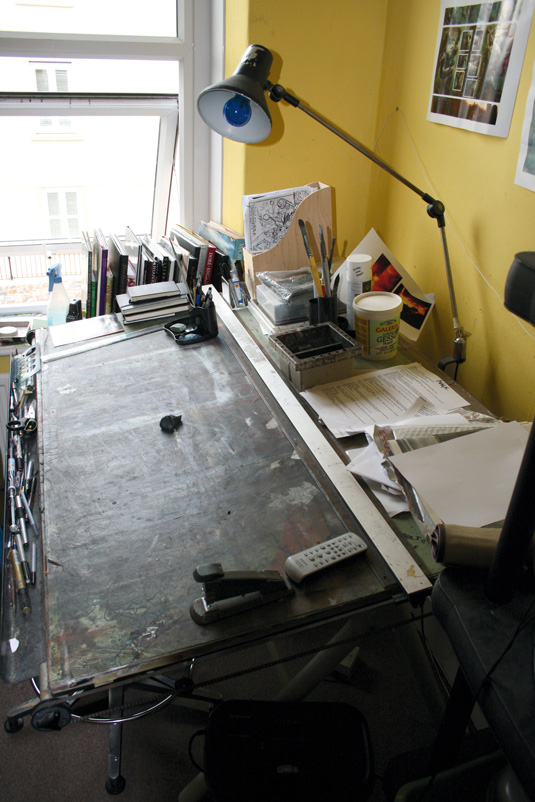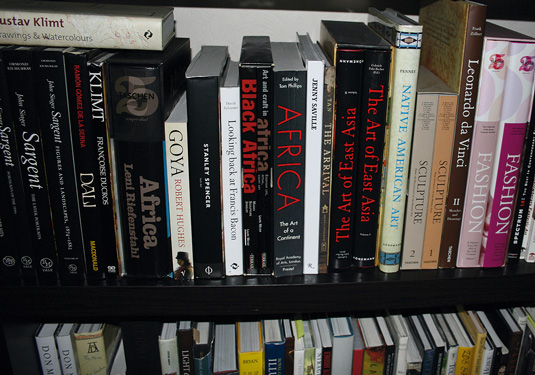Set up your own workspace
Before you start to get creative, you'll need a workspace. Dave Kendall explains how to go about it.
If you're working from home and find yourself constantly being distracted, setting up a dedicated workspace could be just the solution. Whether you're learning how to draw, working on your design portfolio or creating a new logo design, a dedicated space to do so can work wonders for your creativity.
Preparation of a workspace is particularly important where artists are concerned. In this article, I'll give you a few tips based on my own experience to make your workspace and, by extension, your work, comfortable and rewarding.
01. Make it comfortable
If, like me, you never liked being told to tidy your room, it's best to find a space which doesn't need to be cleared up after you've finished a creative session. A corner of your room can work, or if you're blessed with plenty of room, a dedicated studio space. It's also essential that the area is well-lit. If you can find a north facing window, that would be ideal. But comfort is essential.
02. Choose your surface
Artists through the ages have drawn and painted on every surface and at all angles. I have an A0 draughtsman table, a table easel and a large, free-standing easel for my bigger paintings. You need to be able to see and have access to the whole surface of a painting or illustration. While the table and table top easel accommodate smaller illustrations, the large easel can carry paintings up to four or five feet.

03. Choose a map
I use an angle poise for most of my work. It doesn't matter how you get light on your work as long as it's good and strong. I always work with a blue-coated daylight bulb. Try using a normal bulb after using one and you will see how yellow the light is. Not only does it give you accurate colour, but it's also less tiring on your eyes. Once again, comfort comes into play.
04. Add some inspiration

This comes in the form of books and DVDs. I've been buying books from a very early age so my collection is pretty large. If I am feeling down or lacking in energy the images around me have never failed to pull me out of my slump.
05. Don't forget storage
You'll need somewhere to put your raw materials and finished paintings – safer than the floor. If you have room for a planning chest try to pick one up, though they are sought after so you may struggle. Make sure you protect your materials any way you can. A sturdy portfolio is always going to be useful as you'll need to transport the illustrations around.
Words: Dave Kendall
Bristol-based artist Dave Kendall began his career by illustrating book covers, and more recently has worked on trading cards and comics. He works in both traditional and digital media.
Like this? Read these:
- How to improve your character drawing
- How to draw manga
- How to get started with ink drawing
- Discover the best pencils for artists and designers
- How to choose the right drawing tools

Thank you for reading 5 articles this month* Join now for unlimited access
Enjoy your first month for just £1 / $1 / €1
*Read 5 free articles per month without a subscription

Join now for unlimited access
Try first month for just £1 / $1 / €1
Get the Creative Bloq Newsletter
Daily design news, reviews, how-tos and more, as picked by the editors.

The Creative Bloq team is made up of a group of art and design enthusiasts, and has changed and evolved since Creative Bloq began back in 2012. The current website team consists of eight full-time members of staff: Editor Georgia Coggan, Deputy Editor Rosie Hilder, Ecommerce Editor Beren Neale, Senior News Editor Daniel Piper, Editor, Digital Art and 3D Ian Dean, Tech Reviews Editor Erlingur Einarsson, Ecommerce Writer Beth Nicholls and Staff Writer Natalie Fear, as well as a roster of freelancers from around the world. The ImagineFX magazine team also pitch in, ensuring that content from leading digital art publication ImagineFX is represented on Creative Bloq.
